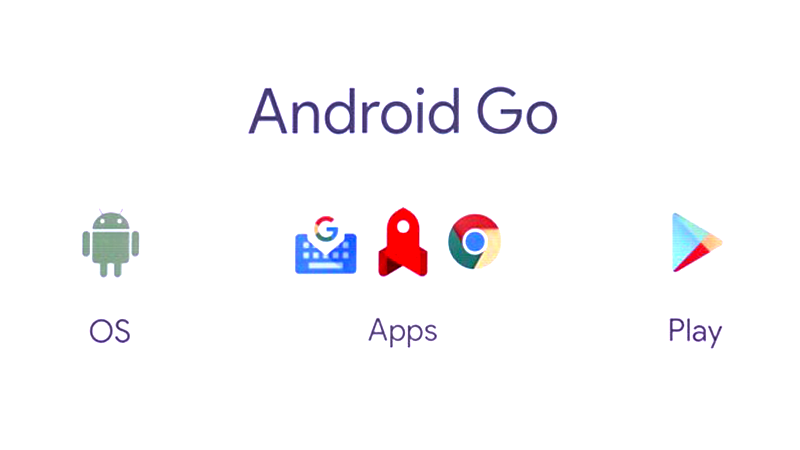Google’s Android Go is the company’s software vision targeting weak smartphones. In the past Android was often associated with subpar performance in smartphones. But the fault was more on OEMs shipping weak hardware than on Google’s shoulders. With the introduction of Android Oreo, Google introduced a lightweight version of its OS dubbed Android Go. This year, with the release of Android 11, we’re also expecting an Android 11 Go counterpart. Apparently, this will be the biggest update since the beginning of this program.
It provides a basic experience that will fit perfectly on smartphones with weak hardware. As part of its Go program, the company launched several Go counterparts of its most popular applications. Since Android Go inception, companies have been releasing a few phones super cheap phones with 1GB RAM and Go Edition of Android. Today, we had the Galaxy A01 Core from Samsung featuring Android 10 Go Edition. It’s unusual to see companies providing 2GB RAM phones with Android Go, after all, 2GB of RAM still seems to enough to run Android, not that good for custom skins. The list of Android Go phones with 2GB of RAM will grow even more as Google is changing its Android policies. Starting Q4 this year, any company releasing an Android phone with 2GB of RAM will need to ship it with its Go platform.
No more 2GB RAM smartphones running stock Android
The info comes from a leaked copy of Google’s Android 11 Go Edition Device configuration guide that has an April 24, 2020 data according to XDA-Developers. The memo reveals that Google is making Android Go requirements for new devices with 2GB of RAM or less launching as from the next quarter. You can have more details in the list below:
- Beginning with Android 11, devices with 512MB RAM (including upgrades) are not qualified for preloading GMS.
- All new PRODUCTS launching with Android 11, if they have 2GB RAM or less, MUST return true for ActivityManager.isLowRamDevice() API, and launch as an Android Go device.
- Starting in Q4 2020, all new PRODUCTS launching with Android 10, if they have 2GB RAM or less, MUST return true for ActivityManager.isLowRamDevice() API, and launch as an Android Go device.
- Previously launched 2GB RAM devices in standard GMS configuration SHOULD NOT convert to Android Go configuration via MRs or letter upgrades. They will remain standard Android.
It may be a matter of usage, but personally, I believe that 2GB of RAM can hold Android without much stress. Of course, apps will be reloading frequently, more than on phones with 3GB of RAM. Moreover, games will probably take the whole RAM in this case. The new restriction seems to be Google’s way of ensuring that Android will always deliver a good experience even on the weakest devices. The company does not seem to be satisfied with its operating system performance in devices with less than 3GB of RAM.

Two things can happen after this change. In the first case, companies will be forced to expand their hardware standards by launching more phones with at least 3GB of RAM. The second possibility is that companies will keep 2GB of RAM in cheap smartphones. As a result, the lighter platform will, consequently, become much more popular.
This will be a problem for companies with custom Android skins
This month, Redmi announced the Redmi 9A and 9C as two super-cheap smartphones. They come with MIUI 11 which is based on stock Android 10. Since Xiaomi has MIUI as one of its main selling points, the company will need to leave 2GB of RAM devices behind in order to keep MIUI running without problems. The company already released an Android Go phone in the past, but it’s far from being a success. We don’t think that Xiaomi will launch any of its most popular smartphone series without MIUI.
We’re curious to see how other companies will respond to the new change, especially the Chinese Ones.
Google took several months to unveil 10 Go Edition. That made us think that the program wasn’t running as expected. The new move proves that Android Go is here to stay. And, apparently, Android 11 Go Edition will not take ages to come.





